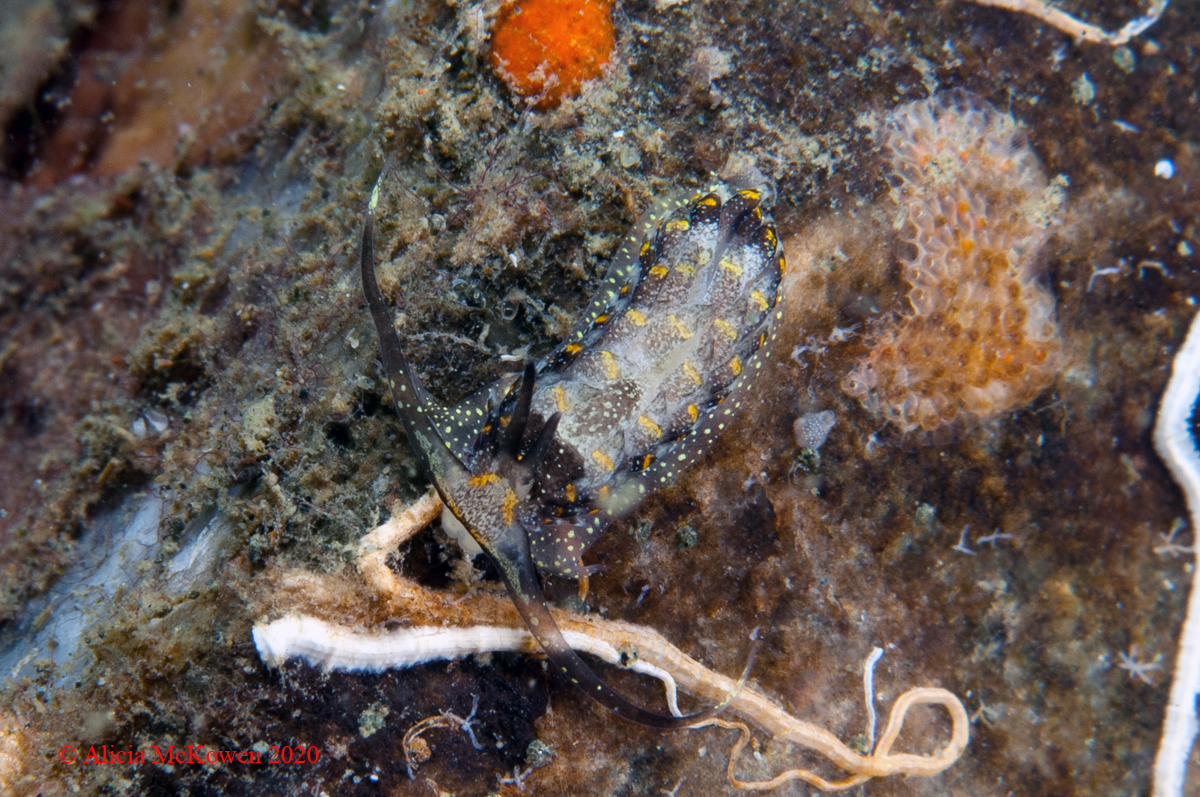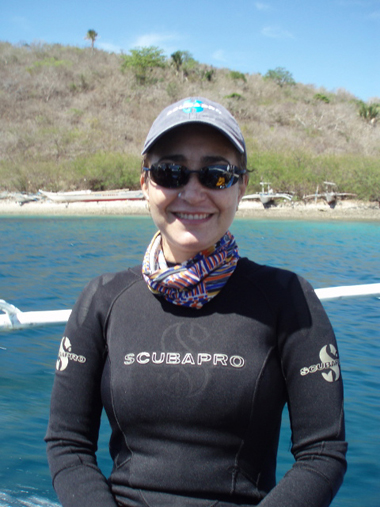 |
Cerberilla albopunctata
Image courtesy of Ali Hermosillo McKowenMilne Bay, PNG
Dec. 2019
I wonder how many species have a trivial name - albopunctata - for their white spots. There are white spotted frogs, lizards, grasshoppers, cichlid fishes, and sea anemones - but amazingly I find only a few white spotted sea slugs - Doriopsilla albopunctata here on the Pacific coast, and in the Indo-Pacific - Goniobranchus albopunctatus; and Hallaxa albopunctata. We of course have all the - alba's and albus', albocristata's, alboterminata's, albocollaris, albomacula, albopustulosa, and abloannulata's. I thought there would be many more. I am sure I have missed a few in my haste to get this done for webmaster Mike.
This albopunctata is pretty little devil, it is quite cryptic on dark sandy bottoms. The general body color is black with numerous white spots. The foot is quite wide extending laterally well past the cerata. The cerata have a yellow subapical bands and white tips. Although there is substantial variation between individuals, there is blue, black and yellow pigment on the very long oral tentacles and head. Rhinophores are smooth and black.
Buried during the daytime, this species is active at night foraging for sea anemones. Currently this species has been documented only from Japan, Indonesia and now Papua New Guinea.
Nice find Ali.
Reference:
Baba, Kikutaro. 1976. The genus Cerberilla of Japan (Nudibranchia: Eolidoidea: Aeolidiidae), with the description of a new species. The Veliger, 18(3): 272-280.
Sammamish, WA 98074
Mar., 2020
Send Dave email at davidwbehrens@gmail.com
Ali Hermosillo McKowen on location in the Philippines
 |
Ali needs very little in the way of introduction to readers of this site. She has been featured in many of the Branch of the Week (BOW) presentations through the years. Diving with Ali can be infectious assuming you can keep up with her. If you didn't have an appreciation for our friends the sea slugs before diving with her, you will certainly reach quantum levels in that regard as Ali is all consuming in her quest to photograph and document their behavior! In the last few years she even acquired her Doctorate in Opistobrach Studies so her enthusiasm certainly knows no bounds. She has the material for putting together field guides for both the Milne Bay region of PNG and also Anilao in the Batangas area of the Philippines. Let's encourage her when time permits to make that happen! As a side note Ali has posted ID's with her Flicker postings from both areas. The links can be seen in the left frame of this site. Very worth while to visit for those who are seeking to put names together with images. What more can be said, Ali is the greatest! Send Ali email at aliciahmckowen@gmail.com
Michael Miller |

Attention all you Sluggers, and you know who you are! The NSSI 2nd edition is available in ebook PDF and book form . The hard back version will become available Nov. 1st. Both will cost $65 (individually). You will need to jump through a few hoops to get the electronic version as pdf distribution is protected by Adobe ID!! Please read the following to enable reading your electronic purchase! This new 2nd Edition is updated and reorganized, including 185 new species. Among other features, the new edition includes additional photographs of species, an identification key, and an up-to-date classification reflecting the latest evolutionary relationships. The Indo-Pacific represents the largest expanse of tropical ocean in the world, stretching from the Indian Ocean coast of southern Africa and the Red Sea to the central Pacific of the Hawaiian Islands, Easter Island and the Marquesas. This region supports the most diverse marine fauna of any place in the world for most groups of marine organisms. The nudibranchs and sea slugs are no exception to this rule; there are about 3,000 described species of these organisms in the world and at least 40% of these have been found exclusively in the Indo-Pacific tropics. This book illustrates 2,138 Indo-Pacific nudibranchs and sea slugs, including many undescribed species.
|

|
